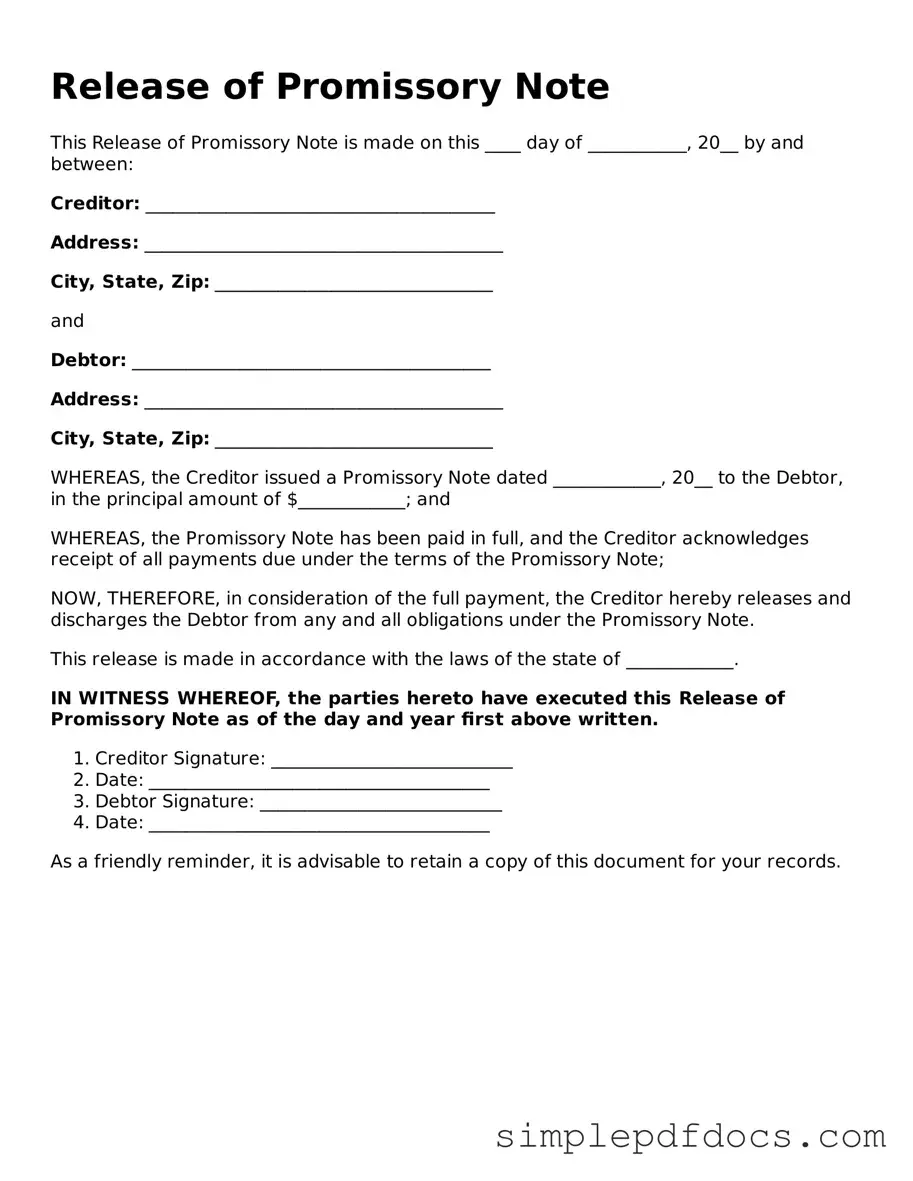Attorney-Approved Release of Promissory Note Form
A Release of Promissory Note form is a legal document that formally cancels a promissory note, signifying that the borrower has fulfilled their repayment obligations. This release protects both the lender and borrower by providing clear evidence that the debt has been settled. Understanding this form is essential for anyone involved in a loan agreement, ensuring that all parties are on the same page.
Get Document Here
